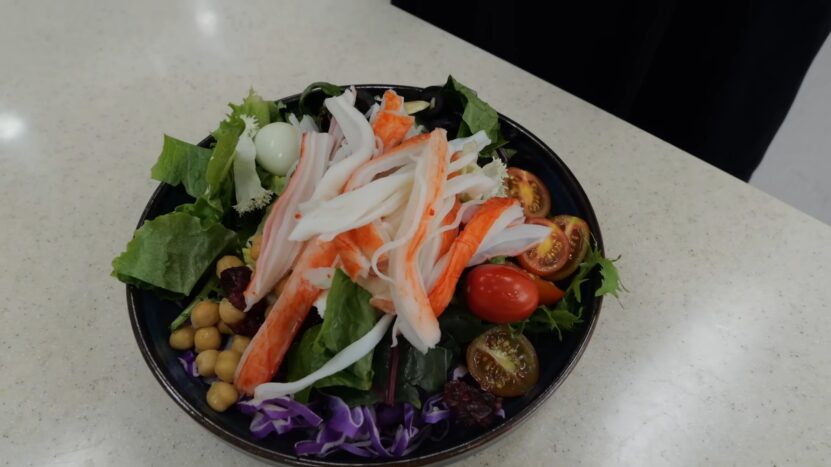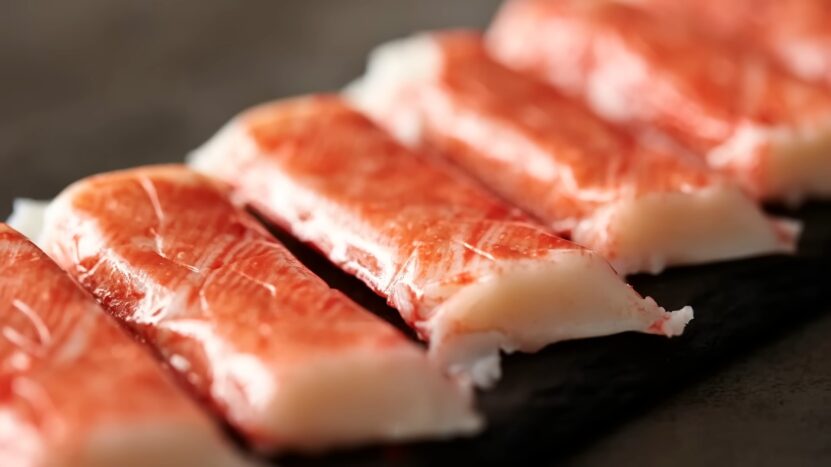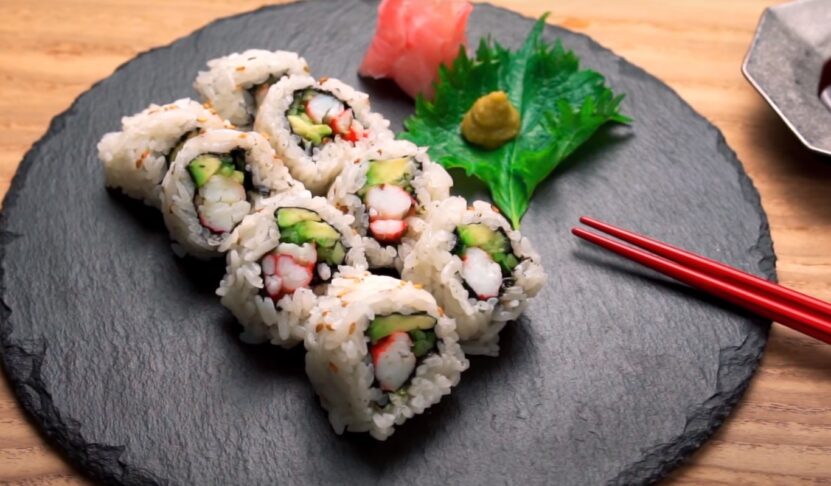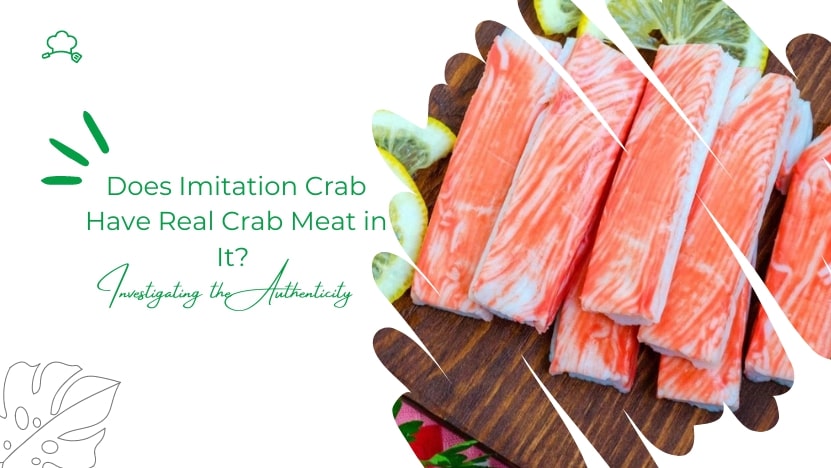Welcome, dear readers! Today, we’re plunging into the depths of the great mystery that lies beneath the red and white stripes of a very popular seafood product: Imitation Crab. You might find yourself asking, does it contain real crab meat? If not, then what exactly are we consuming when we relish those California sushi rolls? Read on to have your burning questions answered.
Imitation Crab Explained
Imitation crab, also known as krab, crab stick, or by its Japanese name, “surimi,” is a ty pe of processed seafood designed to mimic the taste, texture, and color of real crab meat. This delicious ingredient is a staple in various dishes around the world, including sushi, salads, chowders, and casseroles.
But here’s the big reveal: Imitation crab isn’t crab at all. Yes, you read that right. Most imitation crab meat products in the market contain no real crab. Instead, they are composed of a blend of minced fish and other ingredients, molded and colored to look like crab meat.
What Is It Made Of?

Imitation crab is primarily made from a type of processed fish paste known as surimi. Surimi is derived from white-fleshed fish like pollock, hake, or whiting. These fish are abundant and inexpensive, making them a cost-effective choice for manufacturers.
So, how do we get from simple fish to imitation crab? Here’s the journey:
- Fish Filleting and Grinding: The chosen fish are filleted and ground into a thick paste.
- Washing and Draining: The paste is washed multiple times to remove any impurities, fishy flavors, and colors.
- Addition of Additives: Next, a combination of starches, egg whites, sugar, salt, and other flavorings are added to enhance the taste, texture, and stability of the product.
- Coloring and Shaping: The mixture is then dyed to mimic the color of crab meat and shaped into forms that resemble crab legs or lump crab meat.
- Cooking: Finally, the product is cooked to solidify its form and improve its shelf life.
Is It Healthy?

When it comes to nutrition, imitation crab isn’t a powerhouse, but it’s not entirely without benefits, either. Here’s a quick comparison of imitation crab and real crab:
- Protein: Real crab offers more protein per serving compared to imitation crab.
- Vitamins and Minerals: Real crab is also richer in vitamins and minerals like Vitamin B12, Zinc, and Selenium.
- Additives and Sodium: Imitation crab, due to its processed nature, often contains higher levels of sodium and food additives.
Imitation crab can fit into a balanced diet but nutritionally speaking, it doesn’t measure up to real crab. Those with dietary restrictions or concerns about food additives might want to limit their intake or opt for the real thing.
Can People With Shellfish Allergies Eat Imitation Crab?
If you have a shellfish allergy, you might think that imitation crab is a safe alternative for you. While it is true that the main ingredient is fish, it’s essential to remember that imitation crab can still pose risks.
Why? It often contains small amounts of real crab flavoring, which could trigger an allergic reaction in sensitive individuals. Moreover, cross-contamination during manufacturing is also a potential issue. Always read the product labels carefully and consult your healthcare provider if you’re unsure.
Can You Eat It Raw?

Imitation crab is fully cooked during the manufacturing process, so yes, you can eat it straight from the package. That’s why it’s a ready-to-eat addition to salads, sushi rolls, and other dishes. However, heating it can enhance its flavor and make it a warm complement to your meals.
Sustainability and Environmental Impact
One potential advantage of imitation crabs over real crabs concerns environmental sustainability. Fishing for crabs can sometimes harm marine ecosystems, particularly when it involves bottom trawling, a method that disturbs the seafloor habitat. Using fish like pollock to make surimi may have a less ecological impact, provided these species are harvested sustainably.
However, the sustainability of imitation crab is complex and depends on multiple factors, including how the fish for the surimi are caught and how far the product is transported.
How Does Imitation Crab Taste?
Imitation crab might not contain a significant amount of real crab, but does it taste like the real deal?
Well, the answer isn’t as clear-cut. While it’s designed to mimic the sweet and subtle flavors of crab, the consensus is that imitation crab doesn’t exactly match the nuanced flavors of fresh crab meat. But it does carry a mild, slightly sweet, and somewhat oceanic flavor that’s agreeable to many palates. Its texture is also similar to crab, offering a slight chewiness that works well in various dishes.
Ways to Use It in Cooking

Imitation crab shines in a myriad of recipes. Due to its pre-cooked nature and affordable price, it’s an accessible ingredient that can elevate your meals.
- Sushi Rolls: Imitation crab is a staple in sushi, especially California rolls. Its sweet taste and tender texture pair well with sushi rice, nori, and avocado.
- Salads: You can chop up imitation crab and mix it with celery, mayo, and a splash of lemon juice to make a seafood salad. It can also be a protein addition to green salads.
- Stir-fries and Pasta: Sauté imitation crab with some garlic and toss it with your favorite noodles or use it as a protein source in stir-fried dishes.
- Seafood Chowders and Bisques: While it might not impart the same depth of flavor as real crab, imitation crab can still add a seafood touch to your creamy soups.
Is It Vegan or Vegetarian?
While imitation crab isn’t made from crab, it’s not vegetarian or vegan either. The main ingredient is fish, which rules it out for those following a vegetarian or vegan diet. Plus, it often contains other animal-derived additives like egg whites.
If you’re looking for a vegan or vegetarian alternative to crab, there are products made from plant-based ingredients like konjac or jackfruit that mimic the texture and taste of crab.
Imitation Crab vs. Real Crab: The Verdict

So, imitation crab or real crab? The decision comes down to your personal preferences, dietary needs, and budget.
Real crab offers a higher nutritional profile and a deeper, more nuanced flavor. However, it’s more expensive and requires more preparation.
Imitation crab, on the other hand, is affordable, convenient, and carries a mild, sweet flavor. It’s a more accessible way to enjoy a crab-like taste, even if it doesn’t quite hit the mark of the real thing.
Final Words
While imitation crab doesn’t contain much (if any) real crab meat, it still offers a tasty and affordable alternative for many. Whether it’s right for you depends on your dietary needs, preferences, and priorities.
Next time you’re enjoying a delicious sushi roll or a creamy seafood salad, remember the journey that your imitation crab has made from humble fish to the fancy “krab” on your plate. It might not be a real crab, but it’s an interesting culinary creation in its own right.

